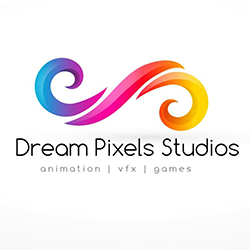In computer graphics, graphics rendering, often referred to as rendering, is the process of creating an image from a model (or models) within a scene using computer software. A model describes three-dimensional objects using a defined language or data structure. This description includes geometry, viewpoint, material, and lighting information for the object. The resulting image can be digital or a point graphic. The term is similar to an artist “painting” a landscape.
The term “render” is also used for calculating effects in a movie editing file to produce the final video.
Rendering is a core concept in three-dimensional computer graphics, often intertwined with other topics. In ‘graphics processing’, rendering represents the final stage in creating the appearance of models and animation. Rendering has become a distinct field due to the increasing complexity of computer graphics since the 1970s.
Rendered graphics are used in video games, simulations, movies, special effects, and design visualizations, each balancing different characteristics and techniques. Many software products are used for graphic rendering. Some are integrated into animation and modeling software, while others are standalone, or free and open-source projects. Inside these, a renderer is a carefully designed application built based on optical physics, visual perception, mathematics, and software development disciplines.
In 3D graphics, rendering can be a slow process, especially in pre-rendering scenarios often seen in film making. In contrast, real-time rendering is used in 3D video games, utilizing graphics adapters with 3D hardware accelerators.

Key Features of the Rendering Process
The characteristics of a rendered image help people understand it. Research and development in graphic rendering aim to effectively simulate these characteristics. Some techniques relate directly to specific algorithms, while others are byproducts of the research process.
Shading Techniques: Changes in color and light intensity on surfaces under different lighting.
Texture Mapping Technology: Adding details to the surfaces of objects.
Bump Mapping Technique: Reproducing the undulating effects of surfaces on a small scale.
Fogging and Participating Medium Technology: How light is darkened passing through impure atmospheres or air.
Shadows: Techniques for creating shadows – the effect of an object blocking light (e.g., a cast shadow).
Soft Shadows: Techniques for creating shadows with softer edges – variations in shadows caused by a partially obscured light source.
Reflection: Techniques for creating reflective effects such as mirrors or glossy surfaces.
Transparency Effects Technology: The effect of light passing through solid objects.
Translucency Technology: The High dispersion of light when transmitted through solid objects
Refraction: Techniques for creating refractive effects – the change in light direction when passing through transparent objects.
Indirect Illumination: Surfaces glow when light reflects from other surfaces not directly lit.
Convergence (a form of reflection): The reflection of light from a glossy object, or the convergence of light passing through a transparent object, creating bright spots on the objects.
Depth of Field: Creating the depth effect, blurring objects far from the viewpoint.
Motion Blur: Creating the effect of blur on moving objects or when the camera moves quickly.
Photorealistic Morphing: Techniques for realistically generating images, making them look like photographs.
Non-Photorealistic Rendering: Rendering that is not photographic – rendering landscapes in an artistic style, like paintings or drawings.

Graphical Rendering Algorithms
Various rendering algorithms exist, and software utilizes them to achieve the final image.
Simulating each light ray in a scene is time-consuming. Restricting sampling smartly is required to produce an image in reasonable time. Due to this, several image rendering methods have evolved to meet various pixel imaging needs.
These methods include rasterization (including scanline rendering), consider the objects and express them to create an image, while there is no means to create the law effect from near and far from a perspective (perspective), light irradiation technology reproduces the scene as viewed from a particular perspective (ray casting), Calculate the observed image based on geometry and basic optical laws of the intensity of the reflection of light, or use Monte Carlo techniques to reduce noise, and ray tracing technology (ray tracing). A more generalized version of the ray casting as an algorithm, and it often using Monte Carlo techniques to achieve more realistic results by speeding up calculating images.
Speeding up the After Effects Render Process
Rendering is a crucial step in motion graphics, but it can be frustrating. Several steps will make After Effects render as quickly as possible.